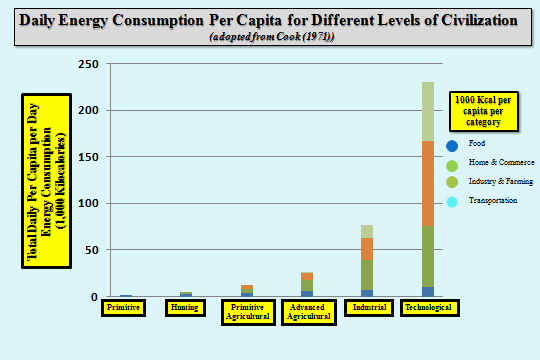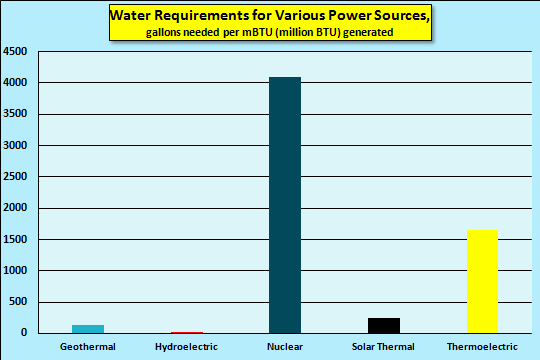Understanding the water needs for energy and power production is key for using a nexus approach. In a nexus approach, knowing the impact of water and the interlinkage is essential for determining optimum choices for energy technologies.
Considerations for Determining Energy Requirements and Technologies for Renewable Projects
Dr. Alan Rozich | BioConversion Solutions LLC
The design of renewable energy projects can be complicated. It is clearly a case of “one size does not fit all” and there are virtually no panacea solutions. One must also be aware that the project approach is likely to be a hybrid of renewable and fossil fuel energy. The exception to this case is the situation where it is desirable to install totally self-sufficient “resource islands”. One must be aware of two important factors. One is to understand societal baseline energy needs. The other is to be cognizant of interlinkages that particular energy sources may have with other resources such as water. It is often the case that it takes energy to make water and vice-versa.
Humans currently require energy for four general uses: 1) Food and the basic needs for living, 2) Home activities and conducting business or commerce, 3) Industrial and agricultural activities, and 4) Transportation. In early history, man primarily only needed to meet base energy needs associated with providing the essentials of living. Over time, the energy needs increased geometrically as society became more technologically sophisticated. The key metric is that the per person energy requirement increased geometrically which results in increased societal energy needs which are calculated by multiplying the per person energy need by the population.

Cook (1971) made an analysis of per capita energy requirements for various technological levels of civilization. Per capita or per person energy requirements are the total amount of energy such as for food, transportation, and other support features that a person utilizes in a society with a particular level of technological sophistication. A graph of this information is depicted below using Cook’s information (Cook, 1971). The results of this graph should give pause for serious reflection. If we make the assumption that the average per capita per day energy requirement currently is about 150,000 kcal/person/day (half-way between Industrial and Technological levels), the graph indicates that human per capita energy consumption has increased by about 30 times from the Hunting level to the Technological Level (5 to about 150). From 10,000 B.C. (Hunting Level), population went from about 5 million to about 7 billion, an increase of 1400 times. This represents a 30-fold increase from a level of 5,000 Kcal/day. Calculating the total increased in human society energy consumption is determined by combining these numbers. The calculation shows that total human society energy requirement has approximately increased a staggering 42,000 times in about 12,000 years.

Man has always required energy to live, but also needs other resources such as water. These facts mean the renewable projects almost always call for a “nexus approach” that consider the interlinkages of resources. For example, water is almost always needed for energy production. Various energy and power generation sources can be graded as to their “water efficiency” rating. Hydroelectric power is the most water efficient while nuclear power is the least water efficient of the common energy and power alternatives that require water. It should be noted that wind and solar PV (photovoltaic) are non-water energy sources. In situations where water is critical such as challenging nexus scenarios, low or zero water requiring energy sources such as wind or solar warrant consideration. Unfortunately, the current technology for biological renewable energy sources, biodiesel and bioethanol, are by far the least water efficient. Understanding the water needs for energy and power production is key for using a nexus approach. In a nexus approach, knowing the impact of water and the interlinkage is essential for determining optimum choices for energy technologies.
References
Cook, E., “The Flow of Energy in an Industrial Society”, Scientific American, September 1971.
Rozich, A. F., Other Inconvenient Truths Beyond Global Warming, College Station, Texas, 2013.
Younos, T., R. Hill, and H. Poole, Water Dependency of Energy Production and
Power Generation Systems, VWRRC Special Report No. SR46-2009, Virginia Tech, Blacksburg, VA, July 2009.
About Dr. Rozich
 Dr. Alan Rozich is the founder of BioConversion Solutions, LLC (BCS) (www.bioconversionsolutions.com). Rozich is a world-renowned expert on biological processes with over 30 years of experience in biological treatment and conversion. Author of the book, Design and Operation of Activated Sludge Processes Using Respirometry, Rozich is internationally recognized for his expertise in biological process technology and has contributed over 80 articles and presentations on the topic. Rozich is a former principal of ERM, Inc., and BioProcess Engineering, Inc. He was also an assistant professor at the University of Delaware and a wastewater engineer for the Columbus Ohio Public Works Department. Rozich is also the author of the recently released book, Other Inconvenient Truths Beyond Global Warming.
Dr. Alan Rozich is the founder of BioConversion Solutions, LLC (BCS) (www.bioconversionsolutions.com). Rozich is a world-renowned expert on biological processes with over 30 years of experience in biological treatment and conversion. Author of the book, Design and Operation of Activated Sludge Processes Using Respirometry, Rozich is internationally recognized for his expertise in biological process technology and has contributed over 80 articles and presentations on the topic. Rozich is a former principal of ERM, Inc., and BioProcess Engineering, Inc. He was also an assistant professor at the University of Delaware and a wastewater engineer for the Columbus Ohio Public Works Department. Rozich is also the author of the recently released book, Other Inconvenient Truths Beyond Global Warming.
Registrations
Registered Professional Engineer in the States of Delaware and Maryland
Diplomate, American Academy of Environmental Engineers
Professional Affiliations
Water Environment Federation (WEF)
International Association of Water Quality
American Academy of Environmental Engineers
The content & opinions in this article are the author’s and do not necessarily represent the views of AltEnergyMag
Comments (1)
Featured Product

